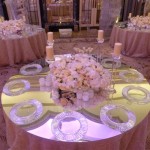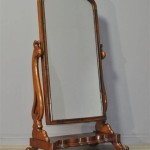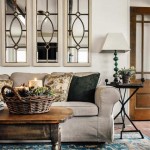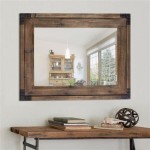Faceted Wall Mirrors: A Comprehensive Guide
Faceted wall mirrors, with their geometric complexity and captivating light play, have become increasingly popular in interior design. These mirrors offer a unique aesthetic, transforming ordinary spaces into dynamic and visually intriguing environments. This article explores the various aspects of faceted wall mirrors, from their construction and design variations to their practical applications and stylistic impact.
Construction and Materials
Faceted mirrors are created by cutting a single sheet of mirror into multiple polygons, then arranging and affixing these pieces onto a backing. The angles at which these facets meet determine the overall shape and reflective properties of the mirror. Common materials used for the mirror itself include standard glass with a silvered backing, as well as more specialized options like tinted or antique mirror glass. The backing material can range from simple plywood to more robust and aesthetically pleasing options like metal or high-density fiberboard.
Design Variations
The versatility of faceted mirrors lies in the vast array of design possibilities they offer. From simple geometric shapes like squares and triangles to more complex configurations resembling gemstones or abstract art, the arrangement of the facets dictates the overall look. Some designs emphasize symmetry and order, while others embrace asymmetry and a more organic feel. The size and number of facets also play a significant role in the final appearance, with smaller, more numerous facets creating a more intricate and fragmented reflection.
Size and Scale
Faceted mirrors are available in a wide range of sizes, from small accent pieces to large statement mirrors that dominate a wall. Smaller mirrors can be grouped together to create a striking wall feature, while larger pieces can serve as a focal point in a room, adding a touch of glamour and sophistication. The size of the facets themselves also contributes to the overall scale and impact of the mirror. Larger facets create a bolder, more dramatic look, while smaller facets contribute to a more delicate and nuanced aesthetic.
Light Play and Reflection
One of the most compelling characteristics of faceted mirrors is their ability to manipulate light and create dynamic reflections. The angled surfaces of the facets catch and reflect light in various directions, scattering it across the room and adding depth and dimension. This interplay of light and shadow can brighten a space, create a sense of movement, and enhance the overall ambiance. The positioning of the mirror in relation to light sources, both natural and artificial, significantly influences the effect achieved.
Stylistic Applications
Faceted mirrors can complement a variety of interior design styles. Their geometric forms and reflective qualities make them a natural fit for contemporary and modern spaces, adding a touch of sleek sophistication. In more traditional settings, faceted mirrors can introduce an element of unexpected visual interest and contrast. They can also work well in eclectic or bohemian interiors, contributing to a layered and textured look. The specific design and finish of the mirror should be carefully considered to ensure it harmonizes with the overall aesthetic of the space.
Practical Applications
Beyond their aesthetic appeal, faceted mirrors also offer practical benefits. Strategically placed mirrors can enhance the perceived size of a room, making it appear larger and more spacious. They can also be used to brighten dark corners or hallways by reflecting natural light deeper into the space. In addition to their functional role, faceted mirrors can also serve as decorative elements, adding personality and style to any room.
Installation and Maintenance
Installing faceted mirrors typically involves wall-mounting hardware appropriate for the size and weight of the mirror. Some smaller mirrors may come with adhesive backing for easier installation. Maintaining the mirror’s pristine appearance is relatively simple, requiring occasional cleaning with a standard glass cleaner. Care should be taken to avoid abrasive cleaners or materials that could scratch the mirror surface.
Choosing the Right Faceted Mirror
Selecting the ideal faceted mirror involves considering several factors, including the size and shape of the space, the desired aesthetic, and the overall budget. Careful consideration of these elements will ensure that the chosen mirror enhances the room's design and fulfills its intended purpose, whether as a functional element or a statement piece.

Faceted Emerald Cut Wall Mirror 24 W X 30 H West Elm

Tinted Faceted Hex Wall Mirror 56 West Elm

Neil Smalls Faceted Slopes Mirror Wall Sculpture Converso Chicago

Frameless Faceted Swirl Wall Mirror

Tutti Multi Faceted Frameless Wall Mirror By Reflect The Enid Hutt Gallery

Multi Faceted Wall Mirror

How To Make A Multi Faceted Wall Mirror Design Star

Faceted Emerald Cut Floor Mirror 21 W X 60 H West Elm

Rosa Octagonal Faceted Frame Wall Mirror Framed Silver Frames On

Diamond Geo Faceted Wall Mirror








